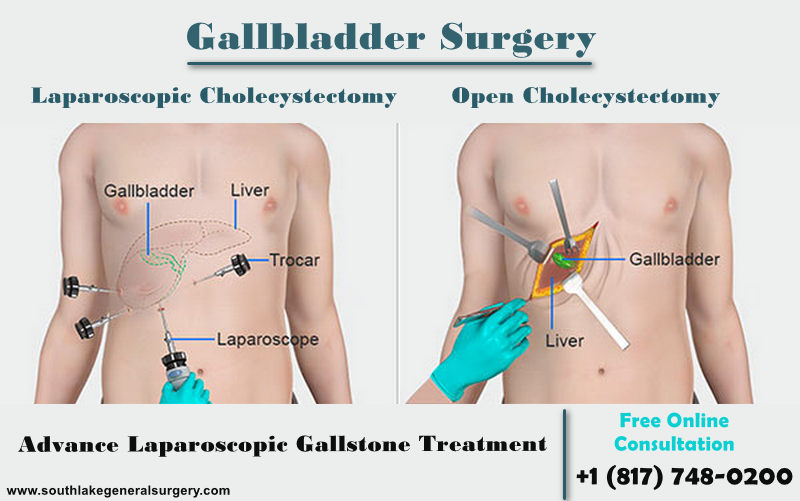The gallbladder is a little pear-shaped organ, underneath your liver. The gallbladder’s core function is to store the bile produced by the liver and pass it along through a conduit that purges into the small intestine tract. Bile helps digest fats in your small intestine.
The term gallbladder disease is used for several kinds of conditions that can influence the gallbladder. Due to gallbladder disease, inflammation happens that creates a disturbance to the gallbladder walls, which is known as Cholecystitis. This inflammation is often because gallstones obstruct the ducts leading to the small intestine tract and building up bile. This condition may lead to necrosis (tissue obliteration) or gangrene.
Unless an individual felt the stabbing or sharp pain in the abdomen of gallstones and you have never thought about your gallbladder. Yet, this small pear-shaped organ can trigger huge problems. Let’s understand more about the signs and symptoms of gallbladder disease and when it’s an ideal opportunity to consult the surgeon.
For what reason Does Your Gallbladder Need To Be Removed?
You may require gallbladder removal surgery if you notice a sharp pain in the abdomen or some other symptoms brought about by gallstones — small stones that can develop in the gallbladder. They can obstruct the flow of bile and disturb the gallbladder. General symptoms of gallbladder issues include:
- Indigestion or acid reflux, with swelling, heartburn, and gas
- Sharp pain in the abdomen
- Nausea and vomiting
- Fever
- Change in color of the skin and the whites of the eyes to yellow (jaundice)
There is good news! You don’t have to live with a gallstone or gallbladder disease anymore, so if it’s causing serious health issues, your doctor will probably prescribe surgery to remove it.
You may require gallbladder surgery if you feel pain or any other symptoms occurred by gallstones.
What Is the Procedure to remove Gallbladder?
There are two different methods of removing the gallbladder. In both surgical treatments, the surgeon uses general anesthesia, which implies you’ll be at sleep and there will be no sense of pain during the surgery. Consult with your doctor about which procedure is recommended for you:
Laparoscopic (keyhole) Cholecystectomy
Laparoscopic gallbladder removal surgery is the most common procedure to remove gallstones.
- The surgeon makes a few small entry points (incisions), or cuts, in the abdomen to insert a laparoscope — a small tube with a micro camera and light on it to look inside the abdomen— through one of the incisions.
- Other clinical instruments, including a small camera, are embedded through different cuts. Gas is siphoned into the abdomen to increase the space, so that surgeon has more space to see and perform the surgery.
- To remove the gallbladder, the surgeon uses a laparoscope and special surgical instruments. The surgeon closes the incision with small stitches, staples, surgical tape, or glue. These will vanish as patients heal, so surgeons won’t need to evacuate them later. With this technique, you can leave the hospital early and recovery will be much faster.
Open Cholecystectomy
In a few cases, laparoscopic gallbladder removal surgery may not be an option for treatment. Reasons incorporate extreme gallbladder issues or scar tissue in the abdomen from prior surgery. With an open medical procedure, your specialist will make a single, large entry point on the abdomen to access and remove the gallbladder. After removing the gallbladder, the surgeon will close the incision with sutures and cover it with a dressing.
In some cases, laparoscopic surgery transforms into an open one during the operation if the surgeon can’t see the gallbladder properly or remove it securely. In case you’re booked for a laparoscopy, consult with your PCP early about its risk factor turning into open surgery.
What Are the Risk Factors for Gallbladder Removal?
Gallbladder removal is general surgery and it is safe. Complications of laparoscopic surgery are rare. But, like any type of surgery, there’s a risk of complications, which can include:
Laparoscopic Gallbladder removal surgery is the most recognized and safe method. Risk factors involved in laparoscopic surgery are uncommon. However, similar to surgery, there’s a risk factors, which may include:
- Bleeding
- Blood clots
- Infection in the surgical area
- Leakage of bile
- Heart problems
- Hernias (when a limited quantity of gut, intestine or other tissue swells through the muscles that cover it)
Consult your PCP about the advantages of Laparoscopic surgery and the risks of surgery before you schedule the surgery.
How much time will it take to recover from gallbladder surgery?
Your recovery time will rely upon the procedure your surgeon has recommended:
- Laparoscopic: Certain individuals discharge from the hospital on the same day after the surgery. However, if you’re discharged from the hospital the same day, it is highly recommended to take proper rest for at least two weeks or as recommended by the surgeon. You can resume your routine activities in about two weeks
- Open: It takes a slightly longer time to get recover from surgery and you’ll have to stay in the hospital for at least three to five days post-surgery. Recovery takes around six to eight weeks.
Appointment
For more information on the Diagnosis & Treatment of Gallstones or Gallbladder removal surgery, please feel free to contact our healthcare expert today for free online consultation at +1 (817) 748-0200.

